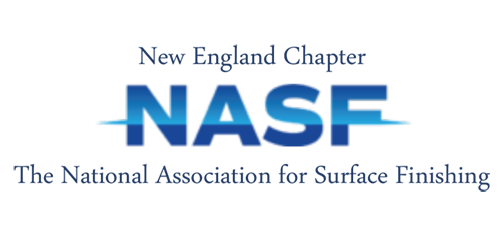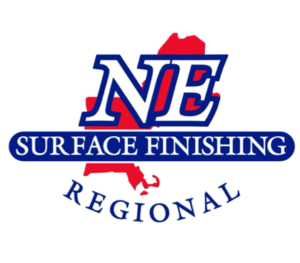Reminder: MCTA’s PFAS Strategy Group Meets Thursday, June 1, 11 a
|
||||||
|

info@nenasf.org
508-754-2671
|
||||||
|

Thirty members of the NASF New England Chapter attended a Seminar sponsored by the Chapter on May10, 2023 at the Courtyard Marriott in Marlborough, Massachusetts to receive their mandatory annual RCRA HazMat and Triennial DOT training. The instructor for this four hour Seminar was David Webster, Environmental Health and Safety Project Manager for HRP Associates out of their Farmington, Connecticut office.
The first segment of the Seminar was the mandatory triennial DOT training session. David gave an intense fact filled two-hour DOT educational training course followed by a written competency test as required by the DOT before Certificates of Completion can be issued.
The second two-hour session of the Seminar was devoted to the required Annual RCRA HazMat training. This session was also a very detailed and intense training exercise with strong emphasis on possible pitfalls of incorrect hazardous waste handling and documentation. This session was also concluded with a written competency test prior to awarding of Certificates of completion for the RCRA Training.
This Seminar and other events and educational opportunities offered by the New England Chapter are just another reason to join and actively participate in all that local Chapter membership in the National Association for Surface Finishing has to offer.

Important Dates
|
|
SUR/FIN 2023
Registration – SUR/FIN registration is open, and we are looking forward to our best show yet! Advanced registration ends May 21, so be sure to register before prices increase May 22 and again onsite.
Thursday Programming – Unlike previous years, SUR/FIN’s Thursday agenda is chock-full of events you won’t want to miss, including a keynote address, awards ceremony, Boot Camp, Blum Lecture, and more, so be sure to book your visit through Friday. Check out our agenda!
Industry Night – Please join us for our Cocktail Style Industry Night hosted by the Ohio Association of Metal Finishers to open the SUR/FIN National Conference! This cocktail party will include a live band, appetizers, and bar. Self-guided tour of the Mather Steamship available from 7-9 PM. Register here!
Technical Sessions – This year, 72 individuals were selected to present their research between Tuesday, June 6, and Wednesday, June 7. Each 30-minute presentation will cover the latest surface engineering and finishing technology topics that are seen impacting business today or trending for tomorrow. Be sure to register for a Full Conference pass if you would like to attend these sessions.
Beware of Scams – Please note that NASF does not sell any email lists for SUR/FIN or NASF. Any emails regarding leads or attendee lists should be considered spam.
|
|
|||||||||
|
Upcoming In-Person Courses
Electroplating & Surface Finishing Parts 1 & 2 (CEF)
In-Person Course, Cleveland, OH June 5 – June 8, 8 AM- 4:30 PM Exam June 9, 8 AM – 10:30 AM
Member Rate: $1,800 Non-Member Rate: $2,200
Registration Deadline: Tuesday, May 23
|
|
|||||||||
|
Aluminum Finishing
In-Person Course, Cleveland, OH June 5 – June 8, 8 AM- 4:30 PM Exam June 9, 8 AM – 10:30 AM
Member Rate: $1,800 Non-Member Rate: $2,200
Registration Deadline: Tuesday, May 23
|
|
|||||||||
|
NASF Membership
Don’t forget– NASF member fees are past due! If you have not paid your member dues yet, please log in to your account here.
Contact info@nasf.org if you run into any issues or have any questions.
Interested in becoming a member? Check out our membership options and apply today!
|
|
NASF 1000
The NASF 1000 program was established to ensure that the surface finishing industry would have resources to effectively address regulatory, legislative, and legal actions impacting the industry, NASF members and their workplaces. All funds from the NASF 1000 program are used exclusively to support specific projects and initiatives that fall outside the association’s day-to-day public policy activities. The sustained commitment from industry leaders has helped the NASF remain strong and credible in informing regulatory decisions across the nation.
Please consider supporting the NASF 1000 program. If you have any questions or would like additional information regarding the NASF 1000 program or the broad array of NASF public policy activities, please contact info@nasf.org.
|
|
Custom Courses
Custom Courses allow you to mix and match over 150 courses with an AESF-qualified instructor to create a customized curriculum that meets the educational objectives of your company. Custom Courses are taught over two to four days either in-person or virtually, depending on your preference. To schedule a custom course and/or to secure a quote, email info@nasf.org.
|
|
Chapter News
May Annual MINASF Golf Open – May 19 Thornapple Pointe Golf Club Grand Rapids, MI 1:00 PM Shotgun Start
OAMF Regulatory Compliance Seminar – May 23 NE Ohio Regional Sewer District 4747 East 49th St. Cuyahoga Heights, Ohio 44125
July OAMF Golf Outing – July 12 Manakiki Golf Course, Willoughby Hills 35501 Eddy Rd, Willoughby, OH 44094
August Chicago Midwest Chapter Annual Golf Outing – August 21 Klein Creek Golf Club 1N333 Pleasant Hill Rd Winfield, IL 60190
September Detroit Auto Show Chapter Meeting – September 13-14 Industry Preview Days
October Midwest Seminar – October 5-7 Grand Hotel, Mackinac Island
Make sure to get your event in front of this industry-specific network by alerting NASF of your upcoming chapter events. To submit your event for inclusion on NASF.org as well as our newsletters, contact NASF at info@nasf.org. |
|
|
|
|
The New England Chapter of NASF hosted a virtual seminar for the benefit of their membership as well as the entire non-NENASF metal finishing community. The event was held on Wednesday March 8, 2023. The Executive Board opted to offer this event free of charge to all NENASF members, and at a modest fee to the rest of the metal finishing community, in hopes that it would not only educate but to bond together those associated with the metal finishing community.
In addition to offering vital technical information to the metal finishing community the event also made available two-hour Continuing Education Wastewater Treatment Contact Hours to be used towards Wastewater license renewal. It was conducted by means of Zoom format and attracted about thirty attendees. It consisted of three segments featuring five presenters over the two-hour duration from 10:00am to 12:00 pm offering a user-friendly format for all attendees.
Connor McAnespie of Hanna Instruments opened the Webinar with a presentation on the various devices available to the metal finishing/ wastewater treatment professionals to help achieve accurate results and strict compliance standards. He focused a good amount of his presentation on Automatic Titration equipment as a means for accurate reproducible results. This was followed by a presentation by Ryan Scheck of Bowman Analytical on the variety of XRF options available to the metal finishing community, and how the correct choice can not only lessen rejects but also how this equipment can be used to optimize solution maintenance and measure impurities in wastewater discharge.
The webinar was concluded with presentations by a trio from MCTA (Mass Chemistry and Technology Alliance) and OTA (Office of Technical Assistance),
an assistance branch of the Mass DEP. Katherine Robertson of MCTA opened this segment with an overview of the current regulatory status of PFAS chemicals both locally and nationally. This was followed by a presentation by Keri Sasportas from OTA explaining the emerging Environmental Justice Regulation and how it will impact the metal finishing community. The session was concluded with a presentation by John Raschko of OTA who explained the options for assistance available through that agency for the metal finishing community.
Special thanks to Chris Capalbo for moderating, and to Dev Massimi and Ralph Capalbo as Program Speaker Facilitators for their contributions, and to the combined efforts of NASF Board Members, Committee Members, Chapter Membership and dedicated and talented members of the Metal Finishing Community as a whole for making events such as this available for the benefit of our membership.
|
|
|
|
||||||
|
|
||||||
|

The New England Surface Finishing Regional took place this past November 4th in Salem, MA. It was a huge success with a 120 people in attendance. There were speakers from all over the country that delivered educational and thoughtful presentations to all in attendance.
The New England Surface Finishing Regional is honored to have presented the 6th Annual Foundation Award to longtime supporter Joe Tilton of Tilton Rack and Basket. The award was created to recognize a metal finishing supplier that has demonstrated outstanding contributions, support, and dedication to the annual regional event.
2023 the New England Surface Finishing Regional will be held November 3rd in Newport, Rhode Island. Please continue to follow www.nensaf.org all year for news and events throughout the New England metal finishing industry.